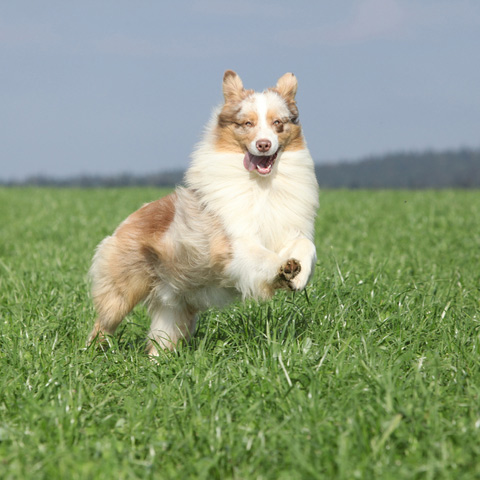 We all know what time of year it is; it’s time for parties, food, and festivities. Along with that come the all too popular New Years resolutions. Whether it’s weight loss, reduced stress, or just overall well-being, we take this time of year to reflect and come up with ways to improve our lives. Well, we aren’t the only ones affected by this time of year. Many of our pets will find themselves indulging in the finer things in life such as turkey, green beans, and gravy as part of the family feast. But, with it comes some unwanted side effects. Aside from an upset stomach, the extra calories and added weight can take its toll on our pets in many of the same ways it does with us. What better time to reflect on their health and well being while contemplating our plans for the year to come.
We all know what time of year it is; it’s time for parties, food, and festivities. Along with that come the all too popular New Years resolutions. Whether it’s weight loss, reduced stress, or just overall well-being, we take this time of year to reflect and come up with ways to improve our lives. Well, we aren’t the only ones affected by this time of year. Many of our pets will find themselves indulging in the finer things in life such as turkey, green beans, and gravy as part of the family feast. But, with it comes some unwanted side effects. Aside from an upset stomach, the extra calories and added weight can take its toll on our pets in many of the same ways it does with us. What better time to reflect on their health and well being while contemplating our plans for the year to come.
Regardless of what time of the year it is, obesity in our pets is as much of a problem for them as it is for the human population. Surveys done in 2015 have estimated that upwards of 53% of dogs are overweight or obese. Only five years ago those numbers ranged from 30-40%. Not only are our pets becoming more overweight, more are sliding up into the obese category. Along with all that extra weight comes a multitude of problems.
Obesity in our pets has been linked to many diseases including; high blood pressure, osteoarthritis, type 2 diabetes, certain types of cancers, pain, lowered lifespan, and heat and exercise intolerance. And this is only the short list.
The writing is on the wall. If we continue down this path, the already precious time we have with our pets will be lessened and the often times preventable conditions will continue to affect their quality of life. At this point you may be asking, “What can I do”? Unfortunately, there are no magic pills or shots that can help our pets lose weight; and its not because companies haven’t tried. Calories in must equal calories out, or weight gain will happen. Now of course there are other factors that can play a part, such as genetics, gender, age, breed, and other medical issues. But what it really comes down to is the majority of the population is feeding their pets too much and not giving them enough exercise.
 The key to successfully managing our pet’s weight is through controlled portions of food and exercise. Many owners report they just love their pets too much and need to give them the extra food to show them their love. They see food as a way of communicating. We need to change that communication to include more play and exercise to begin to fix this problem.
The key to successfully managing our pet’s weight is through controlled portions of food and exercise. Many owners report they just love their pets too much and need to give them the extra food to show them their love. They see food as a way of communicating. We need to change that communication to include more play and exercise to begin to fix this problem.
Getting the right amount of exercise can be challenging but it’s a key element in changing the stats and getting our pets back on track. In one study, 39 dogs ranging from ideal to obese were provided with an activity monitor to track their activity over a six-week period. It was shown that obese dogs spent significantly less time in vigorous activity than dogs that were at an ideal weight.
Another key element is education. In a survey of 829 dog owners it was found that owners of obese dogs were 20 times more likely to underestimate their dogs body condition scores. Unfortunately, people are simply not recognizing that their pets are overweight.
Research shows that lean dogs live on average 2.5 years longer and have fewer chronic diseases than their overweight counterparts. Not only will being lean help your pet live longer, but they will be happier and more energetic, very similar to the way people feel when are at a healthy weight and getting enough exercise. Research has also shown that consistent exercise can prevent the reoccurrence of weight gain that can sometimes happen after a weight loss program is completed.
A consistent strategy is the key to any weight loss program. Regular weigh ins and monitoring by your veterinarian will help keep you on track. In addition, a dedicated fitness regime tailored to your dog’s needs from a certified trainer can be the extra support needed to cross the finish line and continue down the road to success.
The health benefits of exercise to our canine companions are plentiful. Consistent exercise helps with weight loss and the prevention of diseases associated with increased weight. Additionally, exercise can improve behavior, maintain or improve brain function, and nurture the bond caregivers have with their pets.
With the plethora of exercises and equipment available to dog owners these days there are no excuses. Whether there is 10 feet of snow on the ground or its 90 degrees outside, there are options to keep your pets active and healthy any time of the year.
So what are you waiting for? Make your resolution today to bring health and longevity to your pets for years to come.
 About the Author: Genevieve Cahill, founder of Modern Animal Behavior has been a Certified Veterinary Technician for 15 years. All throughout her life she has been very passionate about two subjects, fitness and behavior. She completed her two undergraduate degrees in Psychology and Communication and is now pursuing her Masters Degree in Companion Animal Behavior Counseling. Recently, Genevieve found a way to merge her two passions via the FitPAWS Master Trainer/ University of Tennessee Canine Fitness Trainer program and her masters thesis work researching how exercise enhances learning/behavior in shelter dogs. Genevieve believes that behavior and exercise can be completely intertwined and is passionate about bringing that message to pets and their owners. Genevieve’s background as a Certified Personal Trainer through the National Academy of Sports Medicine (NASM) and her many years as a Veterinary Technician have prepared her to jump right into this up and coming world of canine fitness.
About the Author: Genevieve Cahill, founder of Modern Animal Behavior has been a Certified Veterinary Technician for 15 years. All throughout her life she has been very passionate about two subjects, fitness and behavior. She completed her two undergraduate degrees in Psychology and Communication and is now pursuing her Masters Degree in Companion Animal Behavior Counseling. Recently, Genevieve found a way to merge her two passions via the FitPAWS Master Trainer/ University of Tennessee Canine Fitness Trainer program and her masters thesis work researching how exercise enhances learning/behavior in shelter dogs. Genevieve believes that behavior and exercise can be completely intertwined and is passionate about bringing that message to pets and their owners. Genevieve’s background as a Certified Personal Trainer through the National Academy of Sports Medicine (NASM) and her many years as a Veterinary Technician have prepared her to jump right into this up and coming world of canine fitness.
Byers, C., Wilson, C.C., Stephens, M.B., Goodie, J., Netting, E., & Olsen, C. (2011). Exploring the causes and consequences of canine obesity. Veterinary medicine, dvm360.com, 184-192.
German, A.J. (2006). The Growing Problem of Obesity in Dogs and Cats. Journal of Nutrition, 136, 1940S–1946S.
- (2016). 2015 Pet Obesity Statistics. Retrieved November 07, 2016, from
Kienzle, E., Bergler, R., & Mandernach, A. (1998). A Comparison of the Feeding Behavior and the Human–Animal Relationship in Owners of Normal and Obese Dogs. Journal of Nutrition, 128, 2779S–2782S
Morrison, R., Penpraze, V., Beber, A., Reilly, J.J. & Yam, P.S. (2013). Associations between obesity and physical activity in dogs: a preliminary investigation. Journal of Small Animal Practice, 54, 570–574 DOI: 10.1111/jsap.12142
Zoran, D.L. (2013). Obesity in dogs and cats: A metabolic and endocrine disorder. Vet Clinics Small Animal, 40, 221–239 doi:10.1016/j.cvsm.2009.10.009
